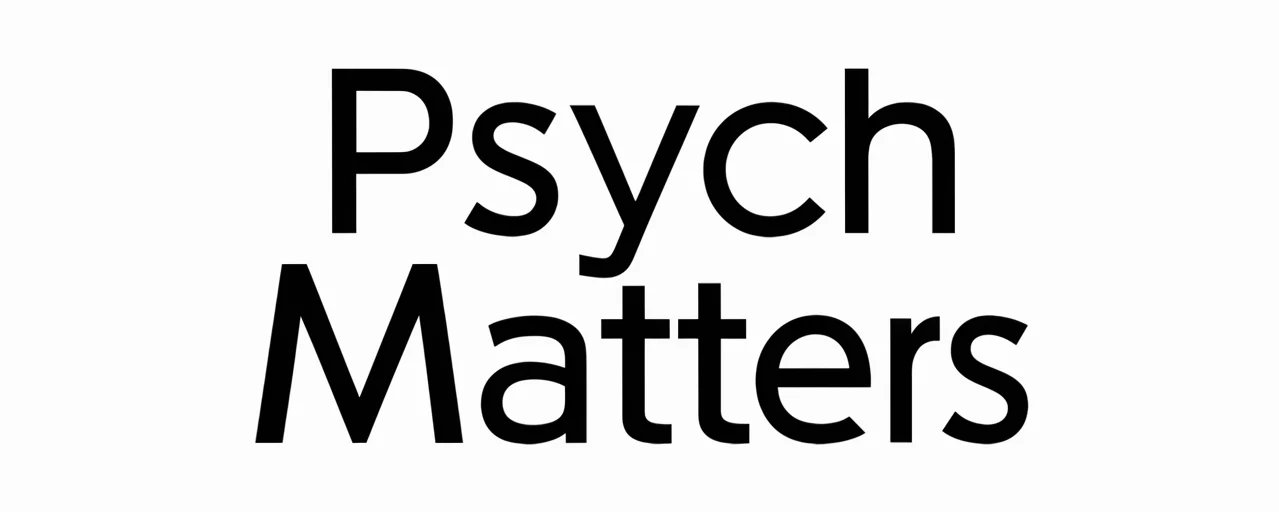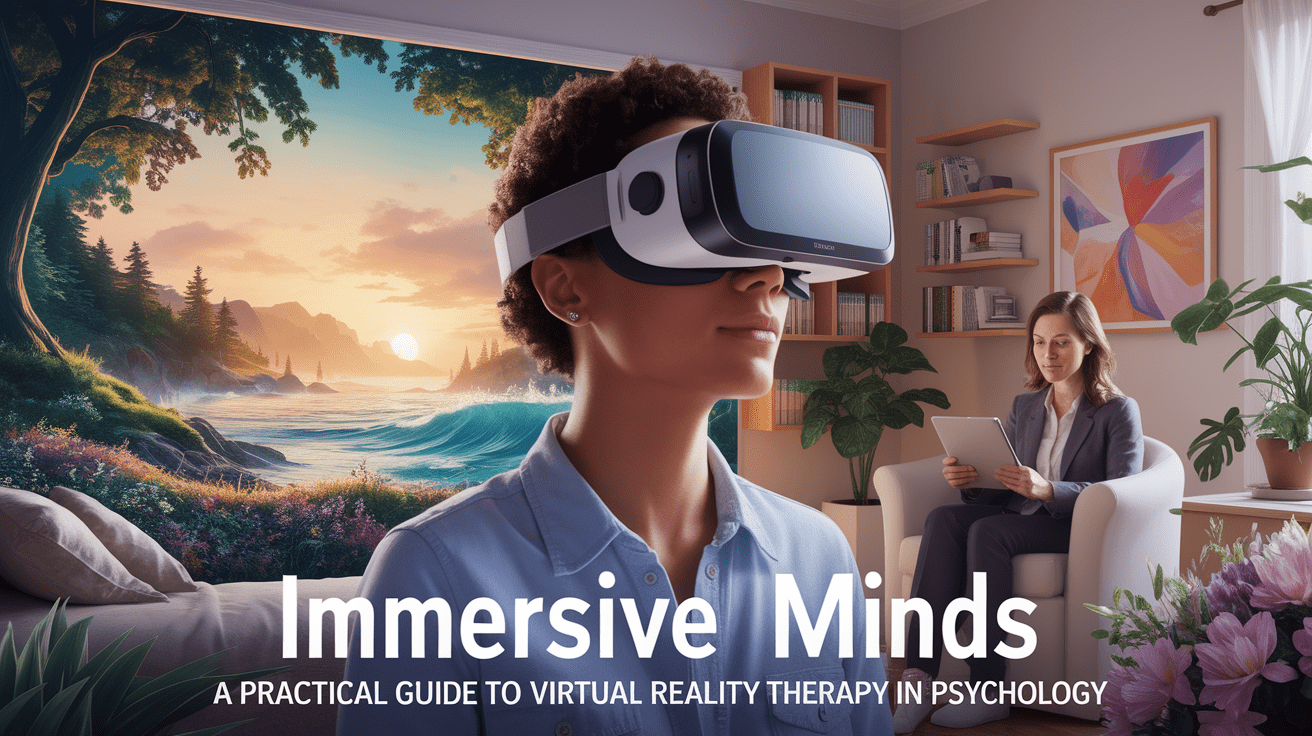Immersive Minds: A Practical Guide to Virtual Reality Therapy in Psychology
Step Inside: Defining Virtual Reality Therapy in Psychology
Virtual Reality Therapy (VRT) is an immersive psychological treatment that employs computer-generated virtual environments to simulate real-life scenarios for therapeutic purposes. By merging core principles of exposure therapy with advanced VR technology, it enables individuals to confront fears, rehearse coping strategies, and reshape maladaptive behaviors in a safe, controlled, and highly customizable digital setting. This versatility extends to conditions such as phobias, PTSD, depression, addiction, social anxiety, and generalized anxiety disorders. The immersive nature—incorporating visual, auditory, and sometimes tactile stimuli—maximizes emotional engagement while allowing therapeutic precision under professional supervision.
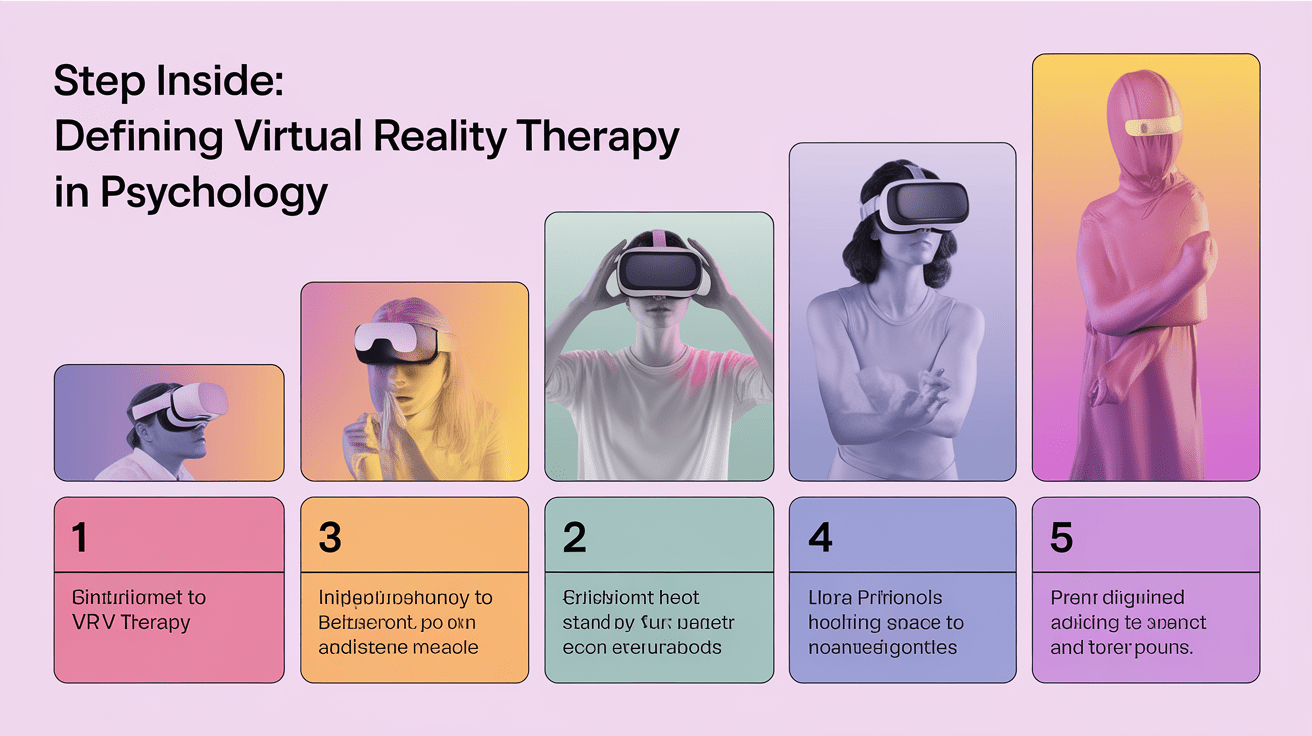
How Virtual Reality Therapy Works
VRT operates by immersing patients in a simulated environment designed to replicate the triggers or challenges related to their mental health concerns. These settings are carefully crafted to engage emotional and physiological responses similar to those experienced in real-life. Research indicates that despite the non-photorealistic rendering of some VR experiences, the brain often reacts authentically to these stimuli, promoting effective fear extinction and skill acquisition (Nature, 2024).
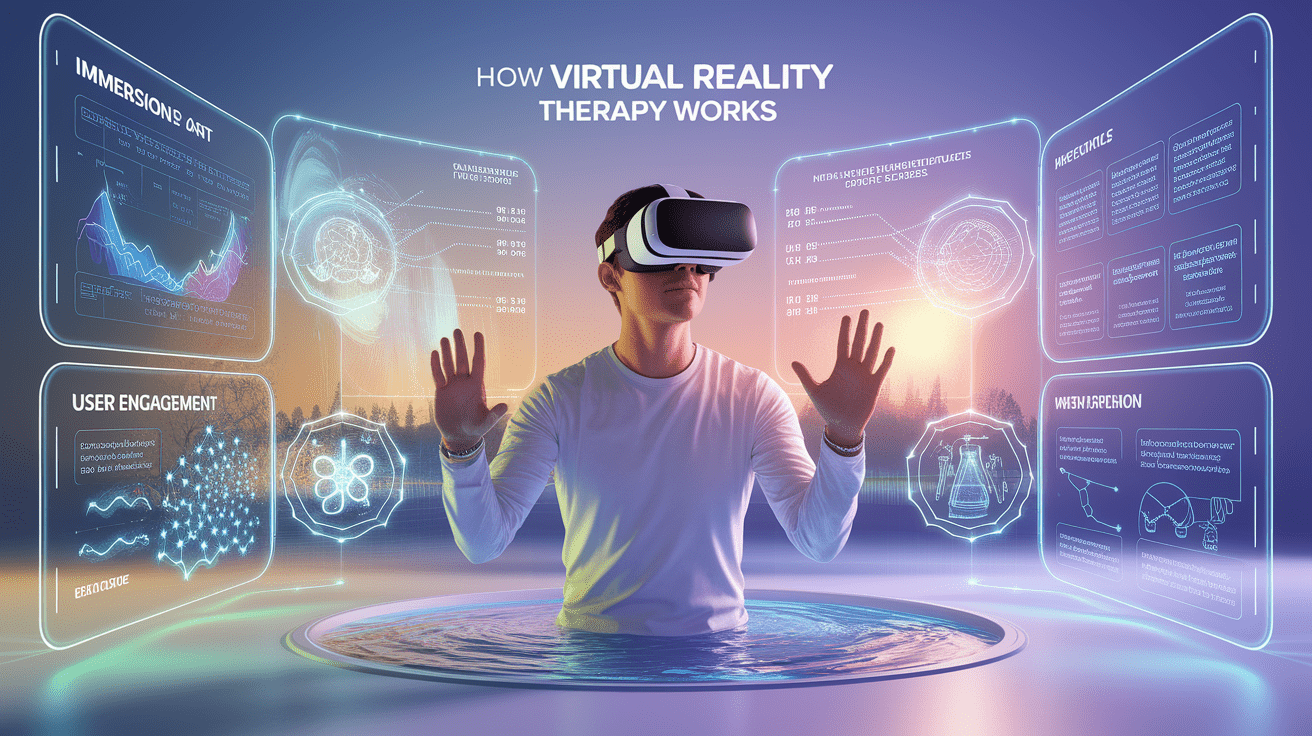
- Controlled Exposure: The therapist adjusts the intensity, duration, and type of exposure to ensure gradual desensitization.
- Repeatability: Unlike in vivo exposure, VR scenarios can be repeated with consistent accuracy.
- Personalization: Sessions can be tailored to an individual’s unique therapeutic goals, including integration with AI for adaptive environments.
Proven Benefits and Effectiveness
The evidence base for VRT is growing. Multiple studies and meta-analyses highlight its potential to surpass traditional exposure therapy in reducing symptoms of anxiety disorders. For example, one study on veterans with combat-related PTSD reported a 50% symptom decrease after immersive treatment (Right Choice Recovery). VRT has also shown measurable improvements in depression when combined with cognitive behavioral therapy techniques in virtual environments that promote positive mood states (Ellie Mental Health).
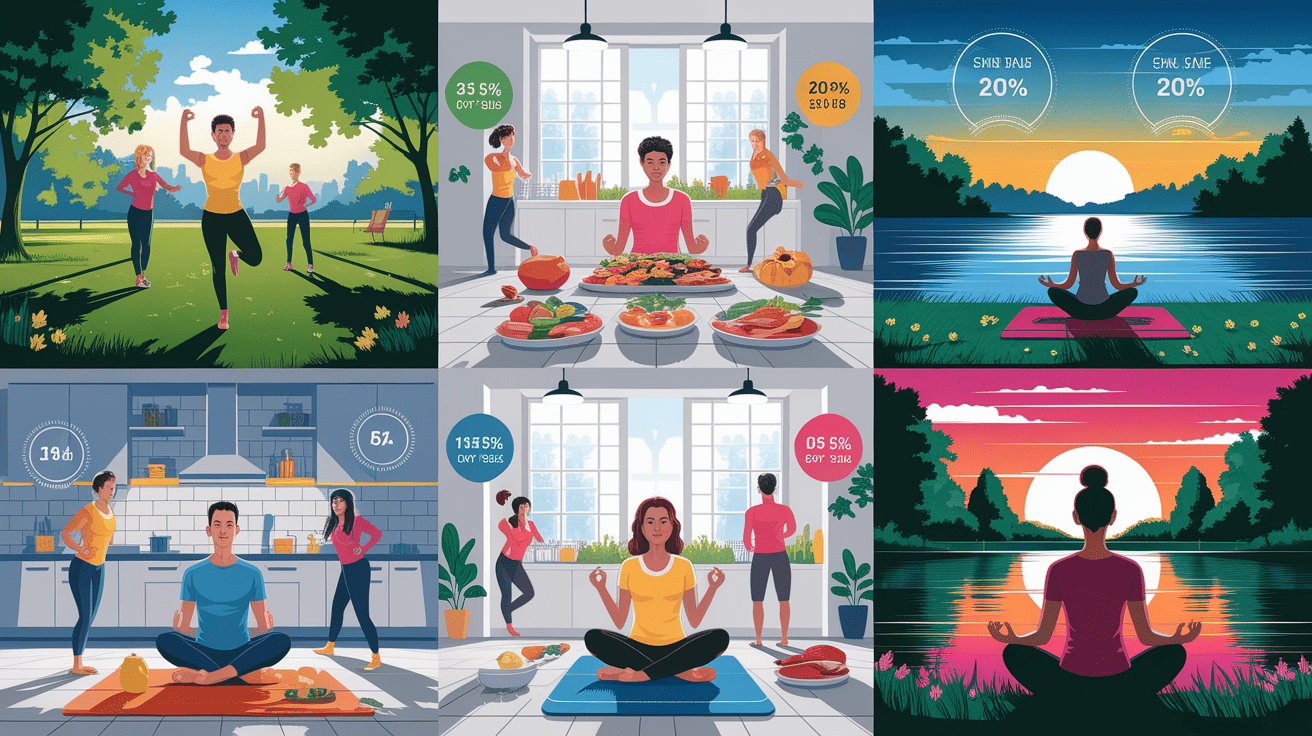
- Effective for PTSD, phobia treatment, panic disorder, social anxiety, and OCD
- Customizable environments reduce the risk of retraumatization
- Applicable in emerging areas such as VR pain management and substance use disorder treatment
Practical Applications in Mental Health
VRT is employed across a broad spectrum of therapeutic contexts:

- Trauma Therapy: Gradual, immersive exposure to trauma cues to assist in PTSD recovery.
- Phobia Treatment: Simulated environments (e.g., heights, public speaking) for safe desensitization.
- Depression Management: Virtual scenarios supporting CBT techniques and mood enhancement.
- Social Skills Training: Practicing conversational and interaction skills in controlled virtual settings.
- Addiction Rehabilitation: Controlled simulations to identify and manage triggers.
Best Practices for Implementation
Successful integration of VRT into clinical practice depends on both technological and therapeutic expertise:

- Conduct a thorough assessment of patient suitability for immersive therapy.
- Use high-quality VR hardware to minimize cybersickness and enhance realism.
- Provide clinician training in both VR technology operation and psychological intervention techniques.
- Integrate VRT as part of a broader, evidence-based treatment plan (e.g., CBT, EMDR).
- Ensure patient debriefing after each session to evaluate responses and adjust protocols.
Limitations and Ethical Considerations
While VRT offers significant benefits, limitations remain. Common side effects such as dizziness or nausea (cybersickness) can limit tolerance in some individuals (Medical News Today). Additional challenges include variable VR environment quality, the need for trained clinicians adept in tech-assisted therapy, and cost considerations. Accessibility issues—both technological and economic—may hinder widespread adoption, although decreasing equipment prices may alleviate such barriers.
Ethical considerations include safeguarding patient privacy, protecting sensitive health data, and ensuring informed consent for immersive sessions. It is essential that patients are aware of the psychological intensity possible in VR settings.
Beyond the Headset: The Future of VR Therapy
Emerging research is expanding VR therapy applications to encompass substance use treatment, complex psychiatric conditions, and chronic pain management (Right Choice Recovery). Advancements in artificial intelligence are enabling real-time adaptation of environments to each patient’s progress and needs. There is active exploration of remote, home-based VR therapy, increasing accessibility for underserved populations (Better Life Recovery).
Socially interactive VR environments are also being developed, which can enhance peer support and facilitate group therapy, particularly for younger demographics accustomed to digital engagement.
Charting the Digital Path to Wellness
Virtual Reality Therapy represents a significant evolution in mental health technology, bridging the gap between traditional psychological interventions and digitally enhanced therapeutic tools. While ongoing research will refine best practices, today’s evidence suggests that immersive therapy has the capacity to transform how clinicians address trauma, anxiety, and other psychological challenges. By leveraging controlled, personalized, and engaging virtual scenarios, VRT offers patients a safe space for growth and resilience—paving the way for a more adaptive, accessible, and effective mental health care landscape.
